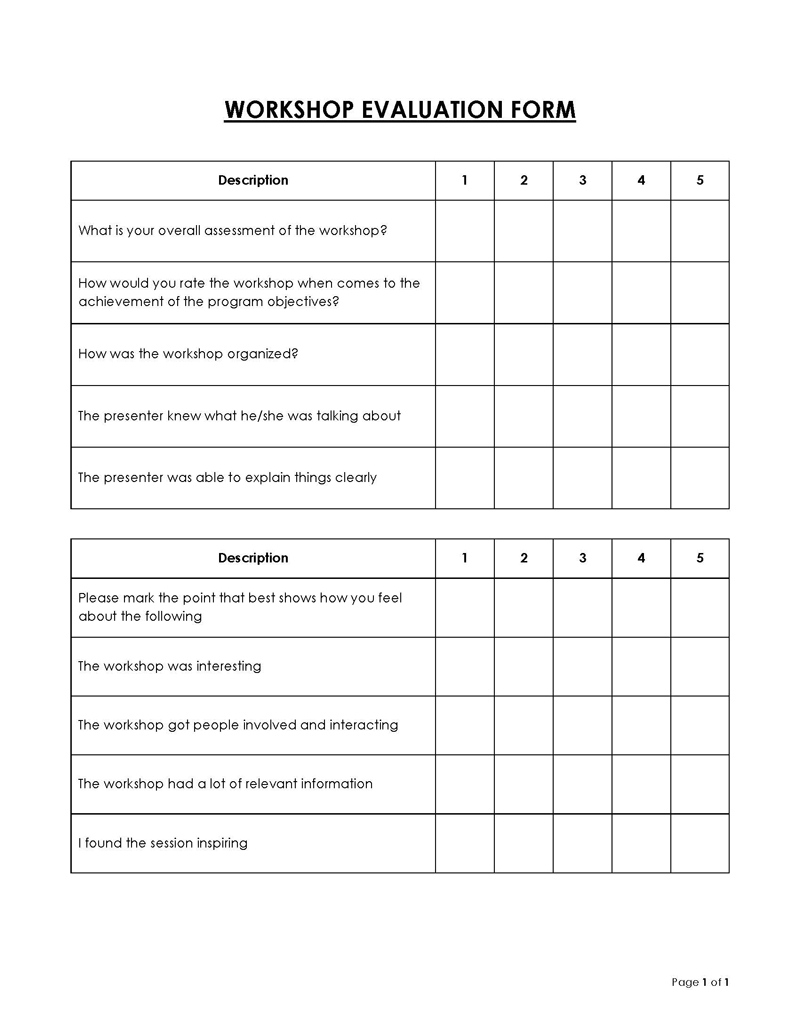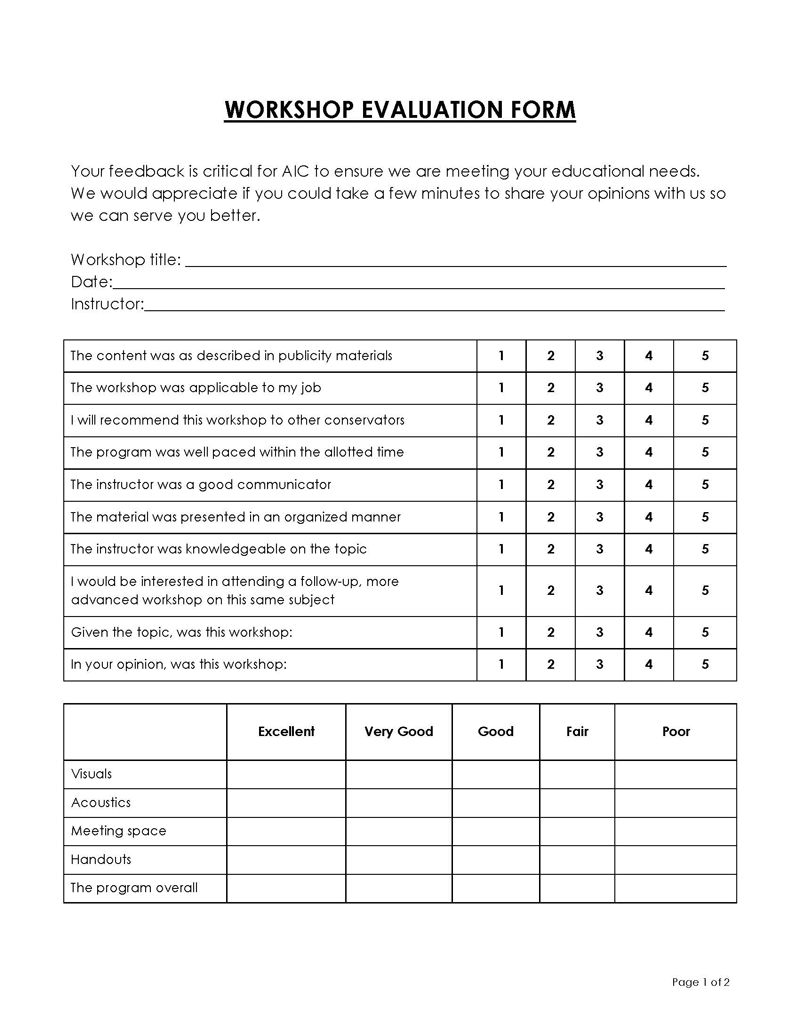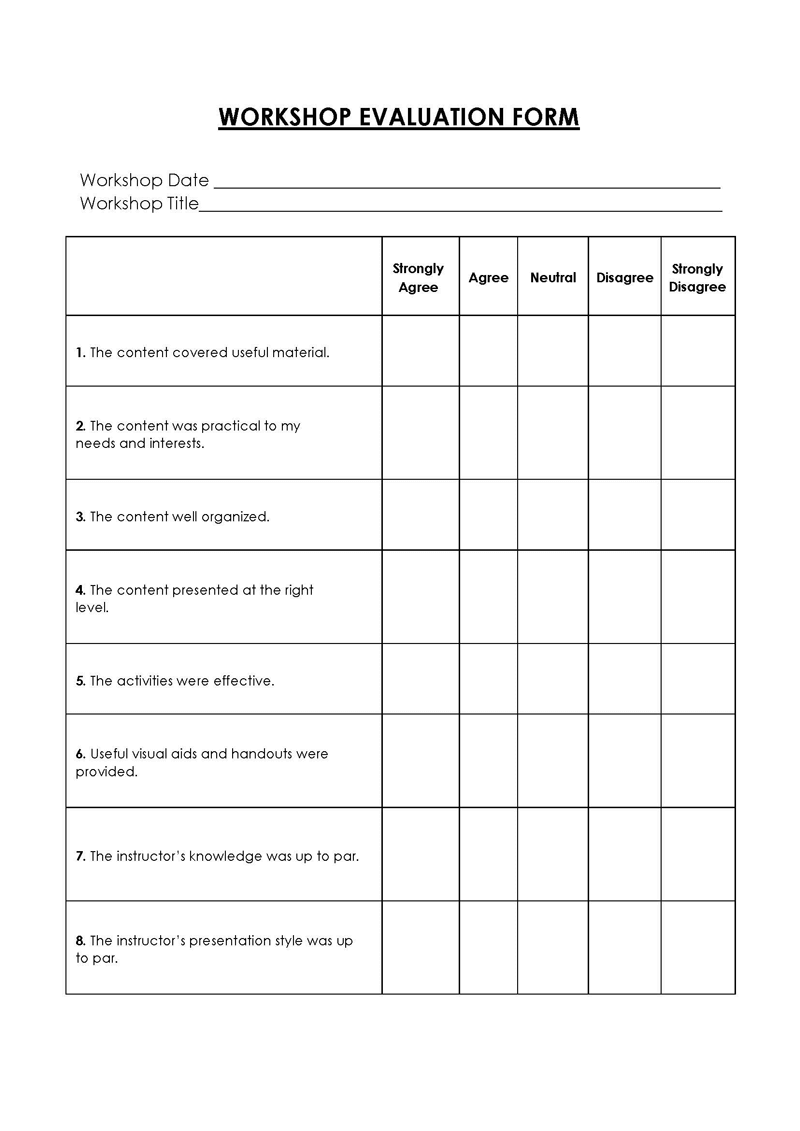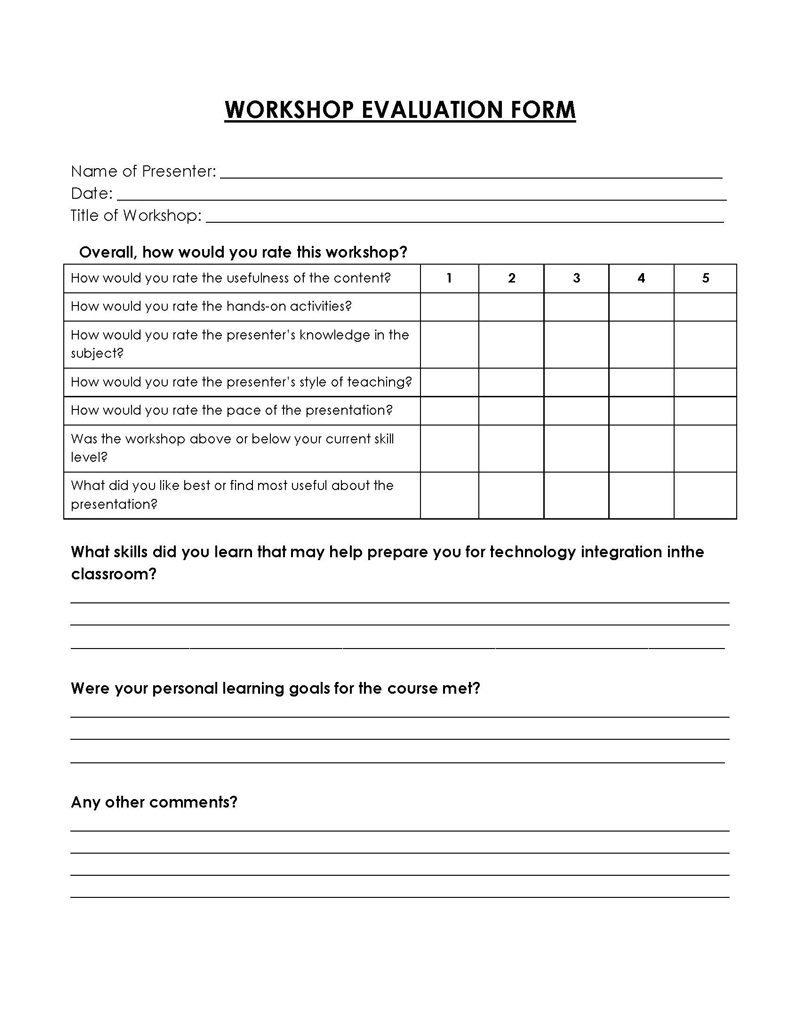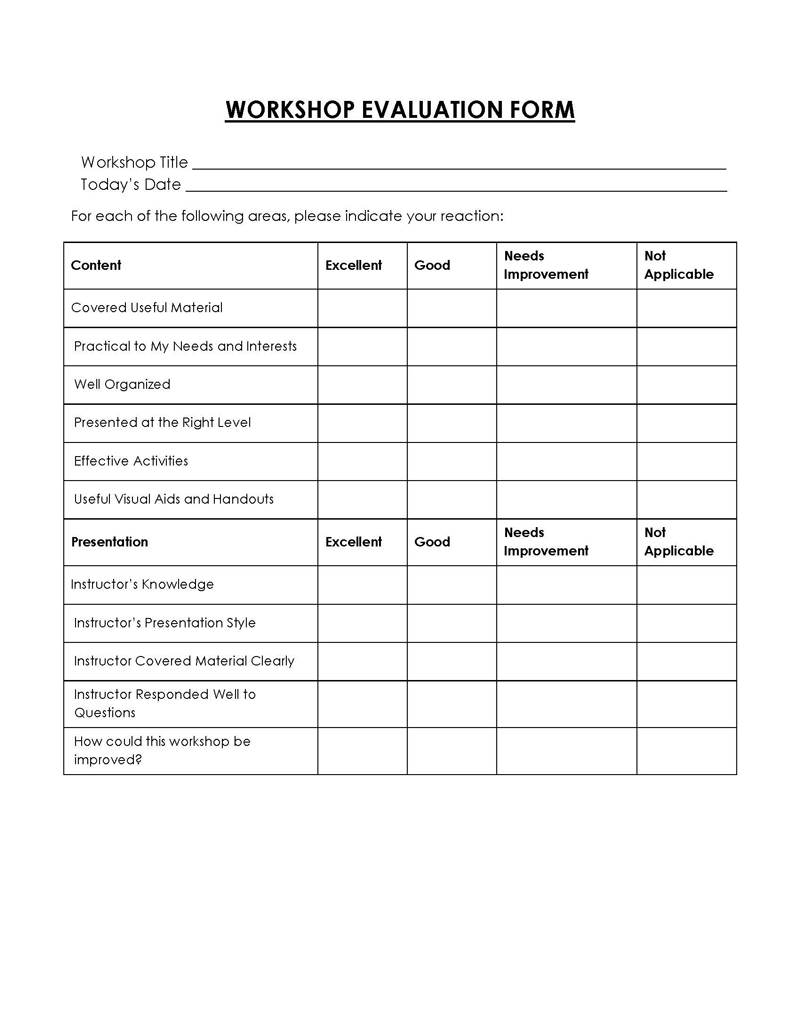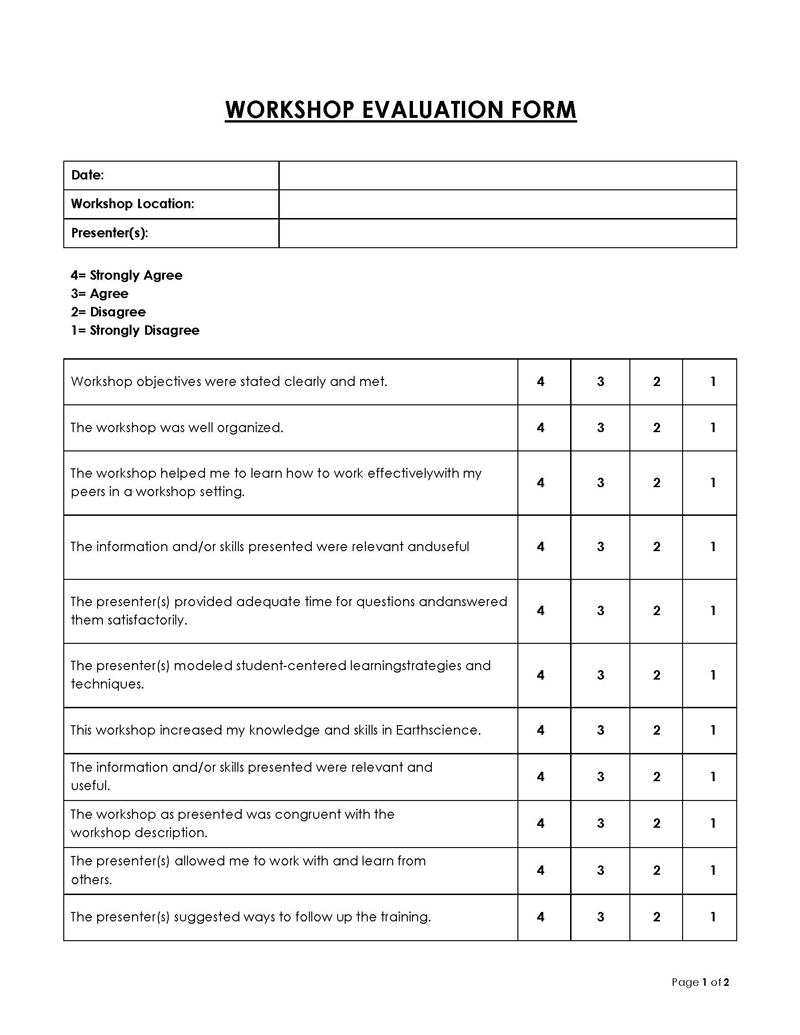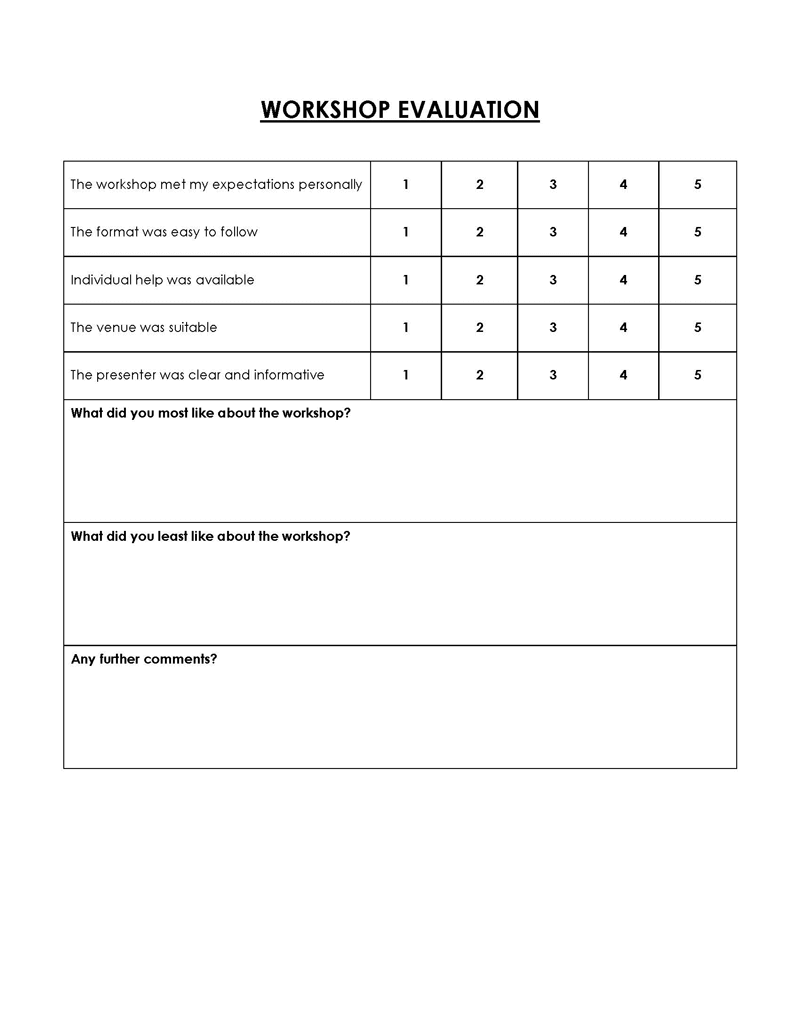Workshop evaluation is a process aimed at analyzing the impact of a training program and measuring its effectiveness.
This method is used to get feedback that could be used to improve a program. In addition, it helps you (as an evaluator) to determine if the objectives of the training program were met.
For example, suppose there is new software you want your employees to use. The first step is to train them to use it by organizing a workshop. You need to evaluate the program’s success at the end of the training. This reveals the performance, impact on work, and return on investment of the software.
This article will cover the benefits, model, mistakes to avoid, and steps to evaluate a workshop program. In addition, free templates will also be provided, which you can use for workshop evaluation.
Statistical insights: Companies have invested considerably in training their employees throughout the pandemic. This was thanks to the need for remote operations, which led to increasing remote training. Statistics from the Training Industry report indicate that US companies spent about $82.5 billion in 2020. The investment is significant; therefore, the impact must be measured, hence the need for training evaluation.
Free Templates: Workshop Evaluation Form
Workshop evaluations will only be successful if the respondents provide accurate responses. When the evaluation form is appropriately structured, it elicits adequate responses. In addition, it affects employees’ impression of the organization of future workshops.
Therefore, this website offers free downloadable workshop evaluation forms. Use these free Workshop Evaluation Form templates to get quick and easy feedback from participants in training courses, seminars, or presentations.
Benefits of Workshop Evaluation
The need for developing employee skills has dramatically increased since the pandemic. Therefore, it is crucial to evaluate the effect of the training given to the trainees.
Here are some of the benefits of workshop evaluation:
Boost company performance
Research shows that when workshop training is effective, it improves employee performance. Skill training is directly proportional to productivity and performance. It can be described as a positive feedback loop. Effective workshops increase employee performance, which optimizes company productivity.
Higher customer satisfaction
The chances of engagement increase when the employees feel equipped with the right knowledge and tools. According to Temkin Group, 79% of companies that had engaged employees provided better customer service. As a result, there was higher customer satisfaction.
Make improvements to your workshop
You can identify the strengths and weaknesses of the workshop program with evaluation. It also provides a vivid picture of the effective methods in the training. Therefore, evaluation helps to make improvements to the training.
Increase workshop ROI
Statistics show that companies spend a significant amount of money on training. When you conduct an evaluation, it shows the relationship between the effectiveness of the training and employee performance. The benefit of workshop evaluation is that it helps to improve the training methods, which enhances the learner’s experience. As a result, it increases the workshop’s ROI.
Enhance employee engagement and retention
Opportunities to grow are the main reasons influencing the decision to stay or leave an organization. When training is effective (which can only be determined through evaluation), it promotes employee engagement. As a result, it optimizes work satisfaction and employee retention.
Analyze workshop efficiency
The primary aim of evaluating training programs is to analyze their efficiency. Data obtained can be used to identify learning patterns, which helps prepare personalized workshops. In addition, data from workshop efficiency analysis can be used to make future decisions in the organization.
Enhance credibility
The data obtained from evaluating the training program enhances the credibility of future workshops. Therefore, it sparks excitement in the employees because they will gain knowledge and improve their skills.
Boost workshop effectiveness
A survey can be conducted among employees to identify perceived changes after workshops. This helps to identify the positive and negative impact of the training on the employees of an organization. Therefore, the evaluation process brings standardization to the training program. It bridges the gap between objectives and outcomes for more effective workshops.
Keep learners accountable
Evaluations help to measure the impact of training programs on employees’ progress. When you conduct routine assessments after workshops, keep learners accountable. Therefore, the employees will focus on the training so they will not fail the assessment.
Models of Workshop Evaluation
There are various models of workshop evaluation. Models use surveys, official certification assessments, quizzes, and case studies to evaluate the workshop’s efficiency.
Here are four models that you can use for workshop evaluation:
Phillips model for training evaluation
The Philips V-model or ROI model is a practical method for training evaluation. This model has five levels, which makes it a preferred choice.
The levels include:
- Level one- Reaction: The first level of the Philips model deals with assessing employees’ experience regarding the program. This step can be described as a data collection stage. Tools like post-training surveys, pop quizzes, reviews, or suggestion boxes can be used to gather data regarding user experience.
- Level two- Learning: The second stage includes measuring if and the extent of learning that occurred. One way to assess if learning took place is to conduct pre and post-training tests. Therefore, the organization can be certain their investment towards employee training is beneficial. For example, suppose the workshop focuses on learning C++. The best way to test if the objectives have been met is to compare the pre-training and post-training assessment results.
- Level three- Application and Implementation: Suppose the post-training evaluation was not satisfactory. Then, level three tries to find the source of the problem- either the application or implementation of learning. For example, the employees understood C++ but could not apply it due to inadequate software. Therefore, the company can invest in the right technology.
- Level four- Impact of the program: This model measures the impact of the workshop on the employees and organization. Level four considers organizational and external factors that may affect the effectiveness of the training program.
- Level five- ROI- Return on investment: Philips model is unique because it measures the return on investment. Cost-benefit analysis is a tool that reveals if the investment has any tangible results. You can calculate the ROI using the following steps:
-Conduct pre-training data to serve as baseline result
-Conduct post-training data
-Identify the effect of the workshop on employee performance
-Convert the result to monetary values
-Calculate the ROI by dividing the “Program Benefits” by the “Program Costs” and multiplying the result by 100%
The Kirkpatrick taxonomy model
Kirkpatrick’s taxonomy model is a widely applied method to determine the effectiveness of employee training.
This model has four levels, and they include:
- Level 1: Reaction: The reaction level evaluates the responses of employees to the workshop. We want to identify how they feel about the training at this stage. Feedback forms or surveys can be used to obtain this data.
- Level 2: Learning: Level 2 evaluates the degree of learning that occurred in the program. Tests are usually conducted before and after the workshop to determine if learning occurred.
- Level 3: Behavior: At this level, the behavior of participants is assessed after the training. This helps to determine if there is a change in participants’ behavior due to the skills and knowledge gained from the workshop.
- Level 4: Results: The last stage involves determining if the training outcomes are satisfactory with the stakeholders’ expectations. You can do this by evaluating the ROE- return on expectation.
Kaufman’s evaluation model
Kaufman’s evaluation model was developed to improve the Kirkpatrick model. The evaluation consists of five steps:
- Input: This considers the type of materials and resources available to the participants during the training.
- Process: This stage deals with how the knowledge was delivered and how the participants responded to it.
- Micro-level results: Micro-level results consider whether workshop participants acquired and applied the knowledge to their jobs.
- Macro-level results: Macro-level results evaluate the impact of the training on employee performance. In addition, it considers the benefits of the knowledge acquired to the organization’s growth.
- Mega-level impact: Mega-level impact evaluates the effect of the training program on external stakeholders and society.
Anderson’s model of learning evaluation
Anderson’s model is fondly adopted by businesses that want to improve overall quality. T
here are three stages of this model evaluation:
- Stage 1: At this stage, you evaluate the current training workshops against the business’s strategic priorities.
- Stage 2:This stage assesses the impact of the workshops on organizational performance.
- Stage 3: Stage 3 is the final step, determining the best approach for your business. Suppose the ROI is not valuable. You may need to abandon or tweak the training approach.
How Can a Workshop be Evaluated: Step-by-Step Guide
Various models that can be applied to workshop evaluation have been discussed. Here are five practical steps to help you implement training program evaluation:
Step 1: Determine the workshop evaluation level
Various training programs may require different evaluation techniques. Therefore, the first step in workshop assessment is determining the workshop level. For example, a training program that focuses on about five people will not require the same evaluation model as that which focuses on two or three departments. In addition, the business needs and budget for evaluation may influence the evaluation technique.
Step 2: Choose appropriate workshop evaluation tools
The second step is to select suitable workshop evaluation tools. You can use a single instrument or combine various tools depending on the evaluation level. When you combine tools, such as using quantitative and qualitative methods, it provides an objective result.
Some evaluation tools include:
- Questionnaires: They are easy to use and relatively inexpensive. In addition, questionnaires can be analyzed using various statistical tools. However, they are often over-used, and the questions may be biased.
- Interviews: Interviews involve a face-to-face question-and-answer session. It allows the interviewer to get in-depth responses to the questions. This tool is helpful for open-ended questions. However, it can be time-consuming. In addition, the respondent may not respond honestly due to the interviewer’s presence.
- Observations: This method involves directly measuring progress by observing employees after a training program. However, it is difficult to get accurate results because performance changes when someone is watching.
- Focus groups: The employees are gathered in groups of 5s, 10s, or 20s. They have discussions regarding the workshop, and data is collected. The focus group method can only be efficient in the presence of an expert moderator.
- 360-degree feedback: 360-degree feedback uses several points of feedback. It is a highly reliable method because it involves lots of crosschecking. Regardless, it is time-consuming and requires an expert.
Step2: Make the evaluation form
The third stage involves creating the evaluation form. Next, you must prepare assessment forms. It could be questionnaires, observations by superiors, or reviews submitted via the suggestion box. This stage is essential because other steps cannot proceed without it.
Step 3: Analyze the collected data
After collecting data from various sources, sorting, and analyzing them, the data needs to be represented appropriately so that the result of the analysis can be meaningful. In addition, the data analysis result helps the organization’s management to make informed decisions regarding workshops.
Step 4: Report the findings
The last step is to report the findings according to the result of the data analysis. When reporting the findings, it is best to use visual tools like graphs, bar charts, or pie charts. This helps the management quickly identify the relationship between training programs and strategic business objectives.
Some Pitfalls to Avoid in Workshop Evaluation
Workshop evaluation is a systematic process. It will be easier if you avoid some simple mistakes.
Here are some pitfalls to avoid when you are conducting training assessments:
Choosing an incorrect methodology
The first problem that could arise in workshop evaluation is selecting the wrong evaluation method. As mentioned earlier, the various evaluation models do not apply to all training programs. In some cases, employees may feel pressured when they know there will be assessments at the end of the training.
However, there is no other way to determine the effectiveness of a workshop without evaluation.
Setting a false training framework
Another mistake that must be avoided is setting a false framework. The evaluation process often seems simple on paper but becomes challenging during implementation. Therefore, it is best to request ample time to collect data, analyze it, and provide the results to the stakeholders.
Lack of planning and poor timing
Workshop evaluation requires proper planning. If the planning process for the evaluation is not thorough, problems may arise during the implementation phase. Therefore, planning must not be overlooked because it may affect timing.
Leaving it for some other time
Another pitfall to workshop evaluation is that you do not see it as part of the training. Instead, you consider evaluation as an extra event. As a result, plans for evaluation at the beginning of the training program are not included. Therefore, you leave the evaluation process for later, which may affect the results.
Final Thoughts
Training evaluation has several benefits for the organization. First, it helps to assess the relationship between the training objectives and the outcomes. In addition, understanding the various training models helps you apply the best one for your training programs. As a result, it optimizes the effectiveness of the training.
Workshop evaluation increases employee engagement, work quality, customer satisfaction, and organizational performance. You can download our free and customizable workshop evaluation forms for quick and easy participant feedback.

